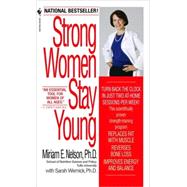
What is included with this book?
| Preface | p. ix |
| Acknowledgments | p. xi |
| What Strength Training Will Do for You | |
| Yes, You Can Turn Back the Clock! | p. 3 |
| Empowering Your Muscles | p. 27 |
| Boning Up on Your Skeleton | p. 54 |
| Keeping Your Balance | p. 85 |
| Getting in Gear | |
| Preparing for Positive Change | p. 103 |
| Equipped for Action | p. 119 |
| The Strong Women Stay Young Program | |
| Strength-Training Basics for Safe Workouts | p. 135 |
| Eight Exercises That Will Make You Strong | p. 149 |
| Creating an Individualized Program | p. 180 |
| Staying on Track | p. 195 |
| A Lifetime of Fitness | |
| More Strengthening Exercises | p. 217 |
| Doing the Program at a Gym | p. 253 |
| Men Need Strength Training Too! | p. 292 |
| Questions & Answers | p. 298 |
| Afterword | p. 321 |
| Index | p. 323 |
| Table of Contents provided by Ingram. All Rights Reserved. |
The New copy of this book will include any supplemental materials advertised. Please check the title of the book to determine if it should include any access cards, study guides, lab manuals, CDs, etc.
The Used, Rental and eBook copies of this book are not guaranteed to include any supplemental materials. Typically, only the book itself is included. This is true even if the title states it includes any access cards, study guides, lab manuals, CDs, etc.
Excerpted from Strong Women Stay Young by Miriam E. Nelson
All rights reserved by the original copyright owners. Excerpts are provided for display purposes only and may not be reproduced, reprinted or distributed without the written permission of the publisher.